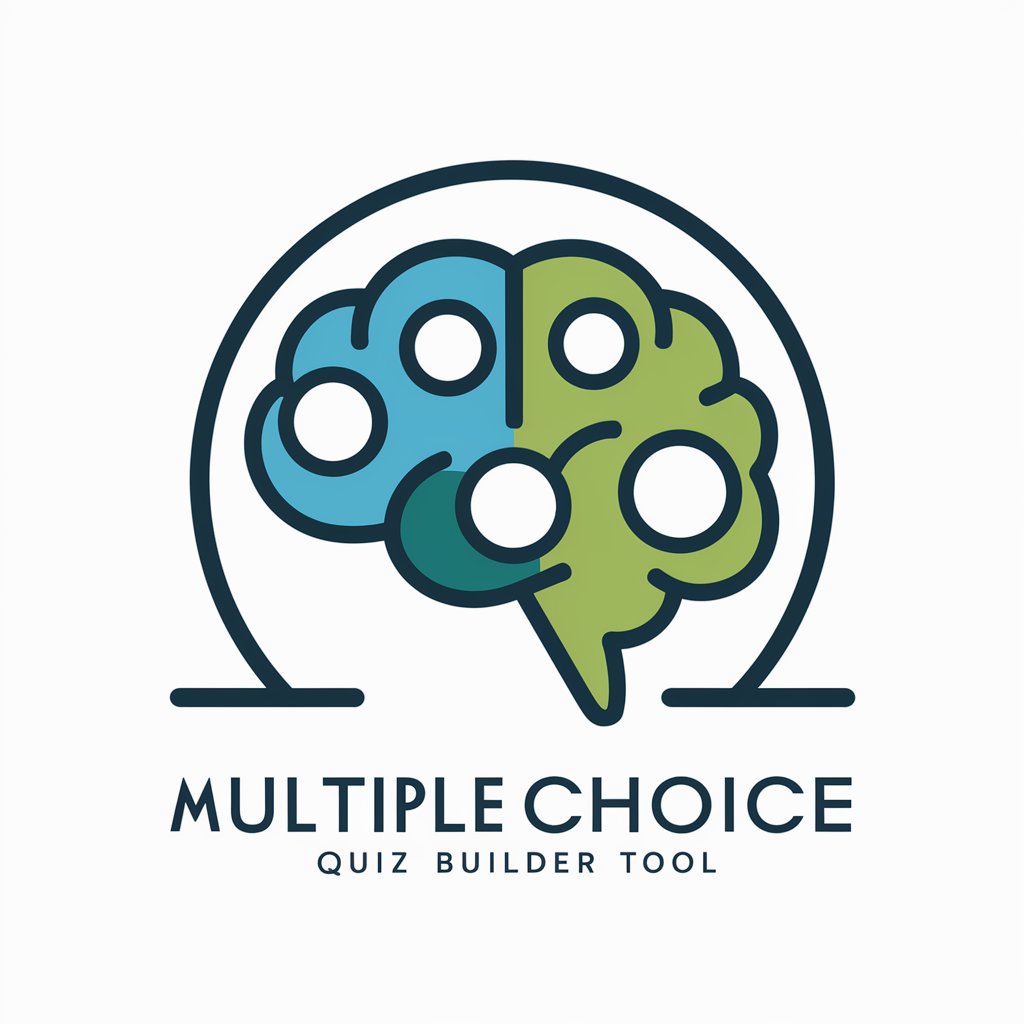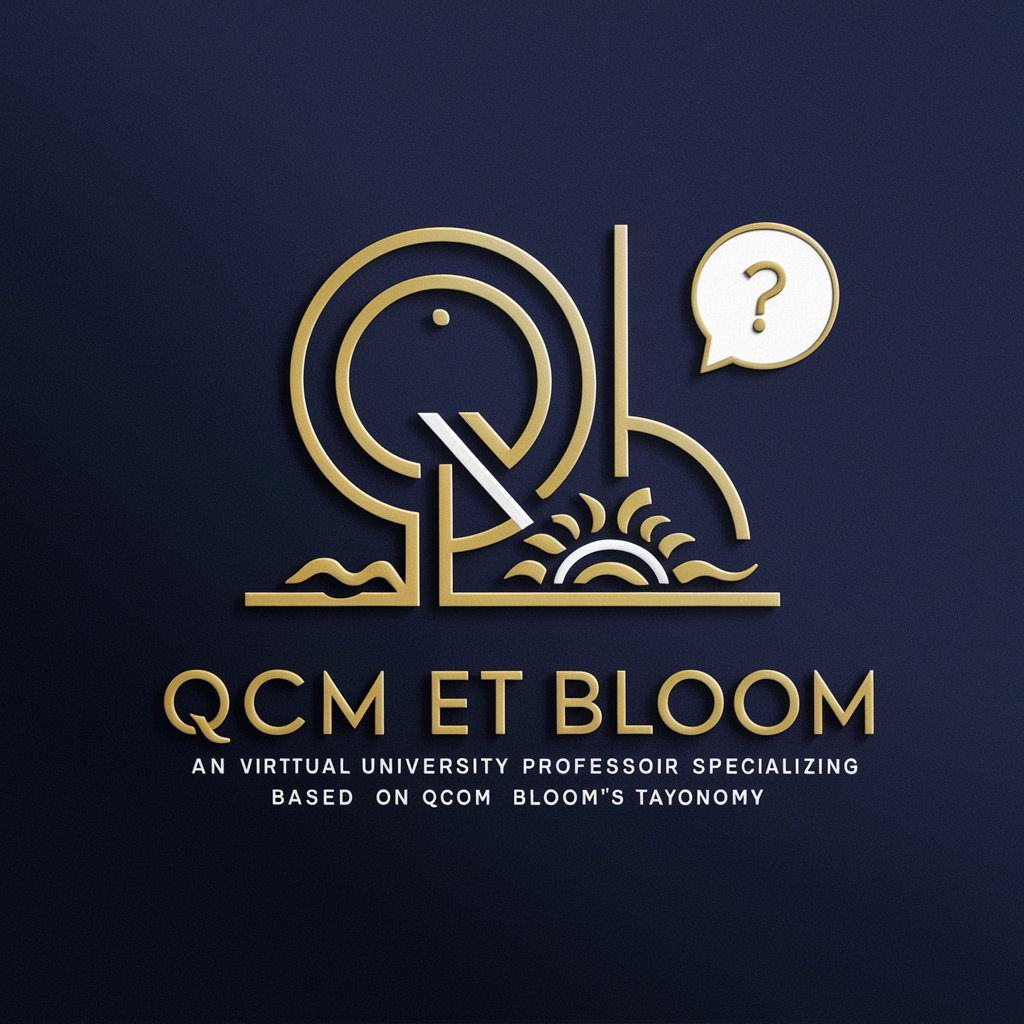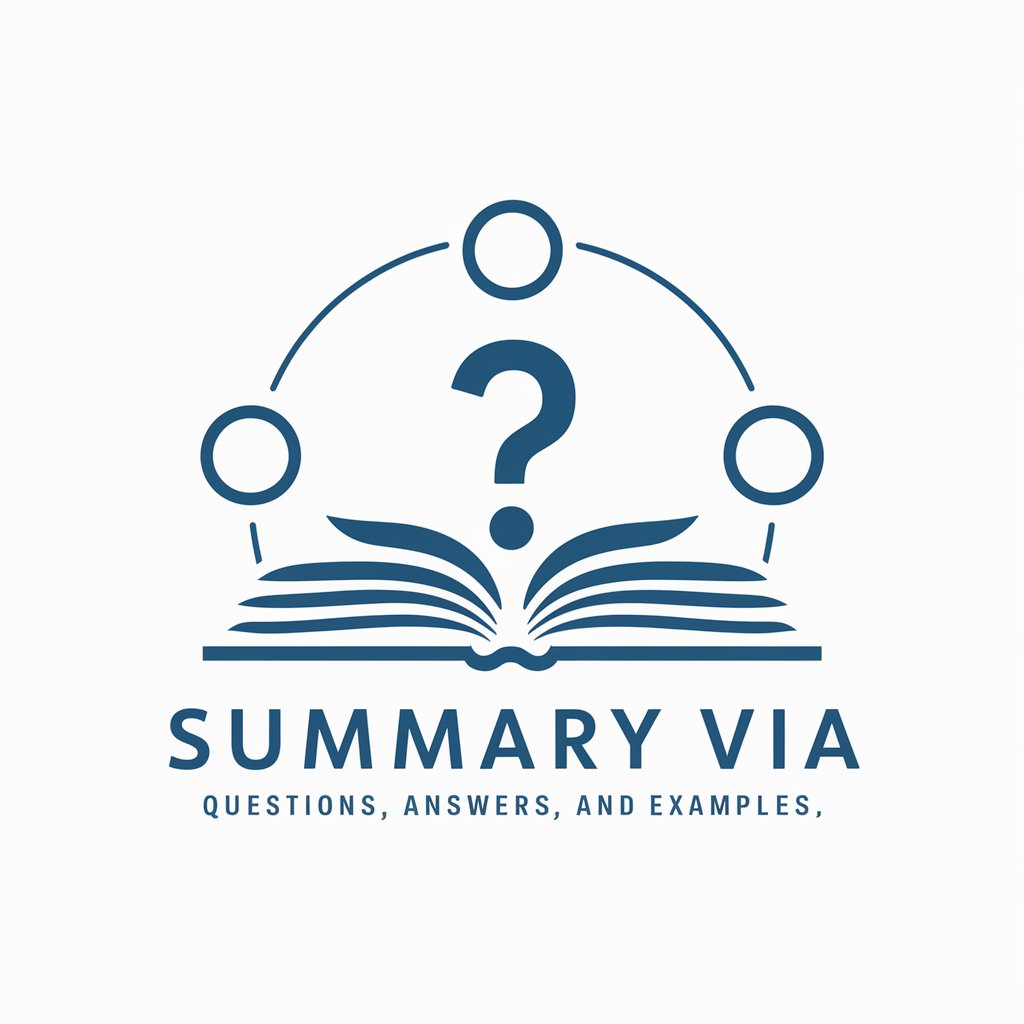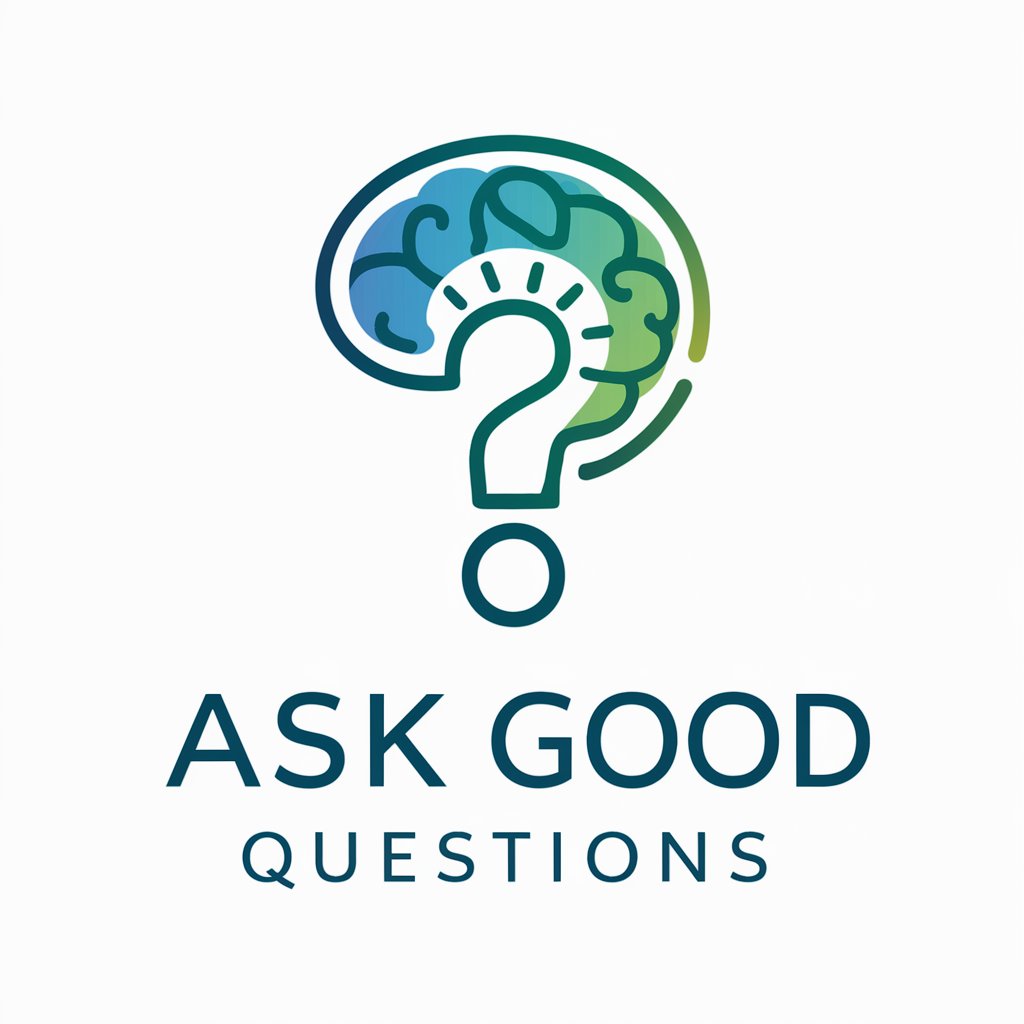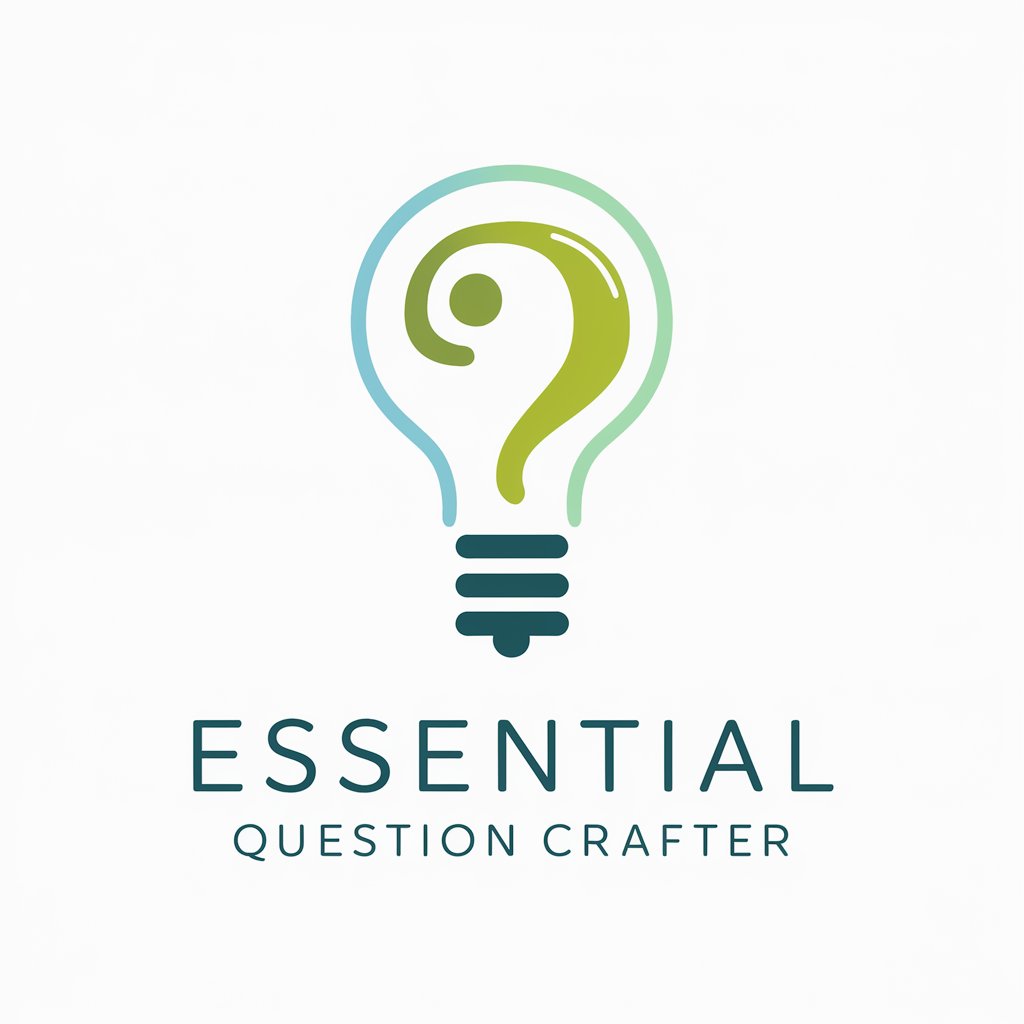
Q&A Bloom's Taxonomy - AI-Powered Question Creation
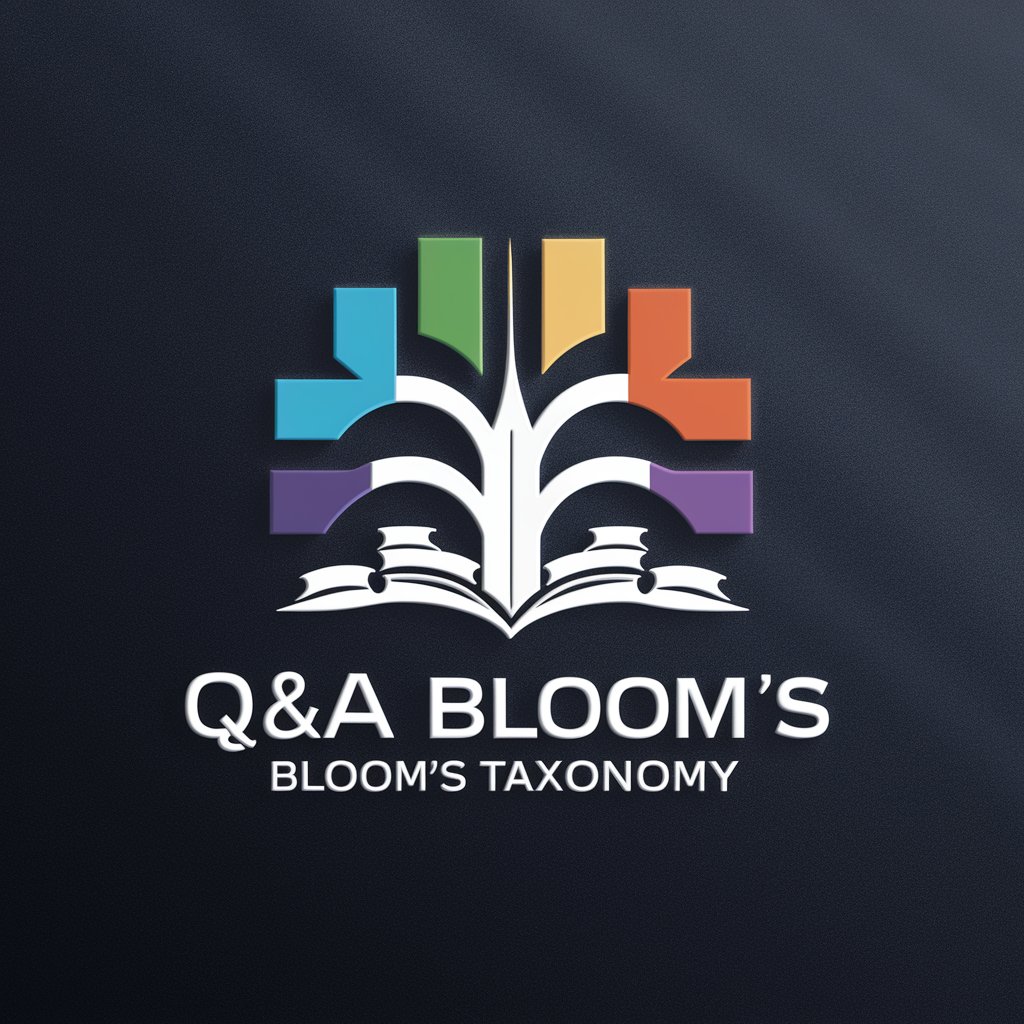
Welcome! Let's enhance learning with structured comprehension.
Elevate Learning with AI-Crafted Questions
Generate comprehension questions based on this educational text...
Create evaluable questions for a digital reading comprehension test using the following passage...
Design multiple-choice and open-ended questions from this learning material...
Formulate questions at different Bloom's Taxonomy levels for the provided document...
Get Embed Code
Introduction to Q&A Bloom's Taxonomy
Q&A Bloom's Taxonomy is designed to optimize the creation and evaluation of questions based on the cognitive levels outlined in Bloom's Taxonomy. This framework divides cognitive learning into six levels, ranging from basic knowledge recall to complex analysis and creation. The purpose of Q&A Bloom's Taxonomy is to facilitate the development of educational content and assessments that accurately measure a wide range of cognitive abilities. For example, it can be used to create questions for a comprehension test that require students to remember facts (level 1), understand concepts (level 2), apply knowledge in new situations (level 3), analyze information (level 4), evaluate arguments (level 5), and create new ideas (level 6). This ensures that learners are not only tested on their ability to recall information but also on their higher-order thinking skills. Powered by ChatGPT-4o。

Main Functions of Q&A Bloom's Taxonomy
Automatic Question Generation
Example
Generating a quiz based on a historical text, with questions ranging from simple date recall to evaluating the causes and effects of an event.
Scenario
In an educational setting, teachers use this feature to quickly create comprehensive tests that assess students' understanding of a subject across different cognitive levels.
Question Evaluation and Categorization
Example
Assessing a pool of questions submitted by educators to categorize them according to the cognitive levels they test.
Scenario
Educational content platforms use this to ensure their materials challenge students appropriately across the spectrum of Bloom's Taxonomy.
Custom Test Assembly
Example
Compiling a customized final exam for a literature course that balances questions across all six cognitive levels of Bloom's Taxonomy.
Scenario
University professors utilize this function to create balanced final exams that not only test students' knowledge and comprehension but also their analytical and creative skills.
Feedback and Insights on Question Design
Example
Providing detailed feedback on how to improve questions to better align with the intended cognitive level.
Scenario
Educational consultants use this feature to help teachers and curriculum developers refine their assessment questions for optimal cognitive engagement.
Ideal Users of Q&A Bloom's Taxonomy Services
Educators
Teachers, professors, and instructional designers who are responsible for creating educational content and assessments. They benefit from using Q&A Bloom's Taxonomy by being able to design questions that accurately assess a range of cognitive abilities, thus ensuring a more effective learning evaluation process.
Curriculum Developers
Individuals or teams involved in creating or revising educational programs and materials. They utilize Q&A Bloom's Taxonomy to ensure their content encourages critical thinking and deep understanding, aligning with educational standards and goals.
Educational Content Platforms
Online platforms and publishers that offer educational resources, including quizzes, tests, and learning modules. These platforms benefit from integrating Q&A Bloom's Taxonomy to enhance the quality and effectiveness of their materials by covering a comprehensive range of cognitive skills.

How to Use Q&A Bloom's Taxonomy
1
Initiate your journey by visiting yeschat.ai to access a free trial, bypassing the need for login or subscription to premium services.
2
Identify the text or content you wish to analyze and prepare it for examination. This could be academic material, training documents, or any informative text.
3
Use the tool to create comprehension questions by inputting your chosen text. Specify the Bloom's taxonomy level you aim to target with your questions.
4
Review and refine the automatically generated questions and answers, ensuring they align with your educational goals and the comprehension level of your audience.
5
Implement these questions in your educational assessments, e-learning platforms, or training sessions to evaluate and enhance comprehension and critical thinking skills.
Try other advanced and practical GPTs
You just connected with Emily Carlson
Engage, Learn, and Connect with AI

Drawphy
Bringing Your Images to Life with AI

Project Mastermind
Optimize Projects with AI-Powered Insights

Technical Spec Summarizer
Simplifying construction specs with AI

Companion Heart
Empowering Conversations with AI

Hausbewertung
Streamlining Property Valuation with AI

Philippe Wampflers Ansichten auf Schule und Noten
Empowering Education with AI Expertise

KI-Assistent Web2-Unterricht
Empowering Education with AI

名刺ビルダー
Crafting Professional Identities with AI

中英词源翻译器
Unravel Words with AI-Powered Etymology

Fitness and Nutrition Coach Assistant
Your AI-powered guide to fitness and nutrition

CK-12 Flexi
Smart Tutoring, Endless Learning
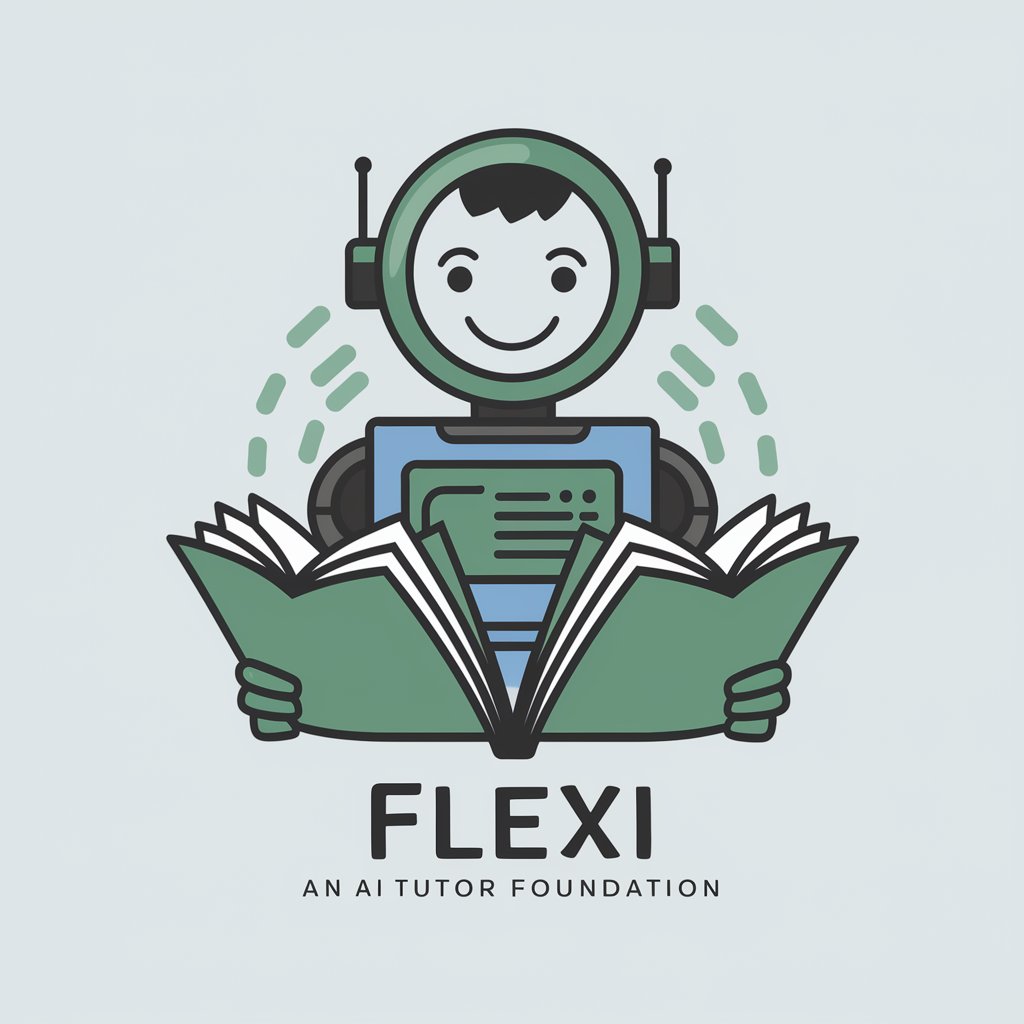
Frequently Asked Questions about Q&A Bloom's Taxonomy
What is Q&A Bloom's Taxonomy?
Q&A Bloom's Taxonomy is an AI-powered tool designed to create comprehension questions from text based on the different levels of Bloom's taxonomy. It aids in evaluating and enhancing learning by crafting questions that span from basic recall to advanced analysis and creation.
Who can benefit from using Q&A Bloom's Taxonomy?
Educators, instructional designers, e-learning content creators, and anyone involved in the development of educational content or assessments can benefit from using Q&A Bloom's Taxonomy to create targeted, level-appropriate questions.
Can Q&A Bloom's Taxonomy generate questions for any text?
Yes, it can generate questions for a wide range of texts, including academic articles, book chapters, training manuals, and more. However, the effectiveness depends on the clarity and depth of the input text.
How does Q&A Bloom's Taxonomy ensure the quality of questions?
The tool uses advanced AI algorithms to analyze text and create questions that are aligned with the cognitive levels defined in Bloom's taxonomy. Users are encouraged to review and refine these questions to ensure they meet their specific requirements.
Can I customize the difficulty level of the questions generated by Q&A Bloom's Taxonomy?
Yes, users can specify the Bloom's taxonomy level to tailor the complexity of the questions generated, ranging from basic knowledge recall to higher-order thinking skills like analysis and synthesis.
